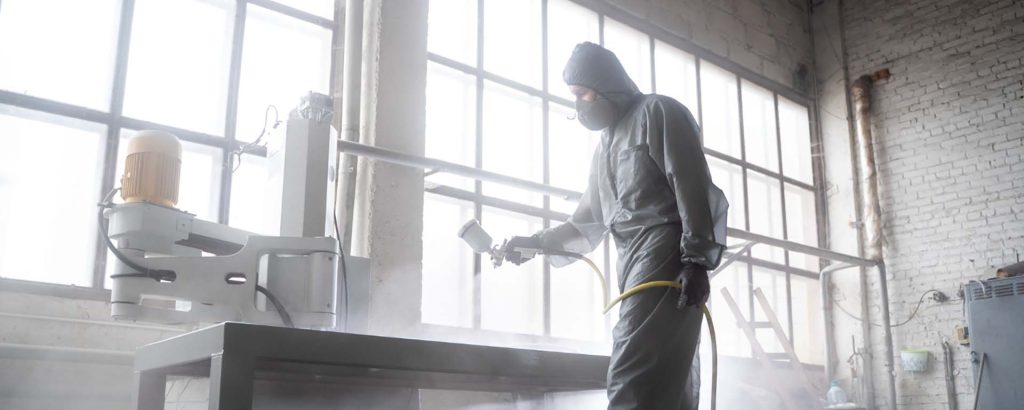Powder coating is a popular finishing process used in various industries to apply a durable and attractive coating to a wide range of products. This blog will explore what powder coating is, its benefits, applications, and the process involved. We will also discuss the differences between powder coating and traditional liquid paint, the types of powder used, and some tips for achieving the best results.
Introduction to Powder Coating
Powder coating is a dry finishing process that involves applying a free-flowing, dry powder to a surface, which is then cured under heat to form a hard, protective finish. Unlike traditional liquid paint, powder coating doesn’t require a solvent to keep the binder and filler parts in a liquid suspension form. This method is widely used for its superior durability, environmental benefits, and range of color and texture options.
Benefits of Powder Coating
Durability
One of the main advantages of powder coating is its durability. The coating provides a hard, tough finish that is more resistant to chipping, scratching, fading, and wearing than traditional liquid paint. This makes it ideal for items exposed to harsh weather conditions or heavy use.
Environmental Friendliness
Powder coating is an environmentally friendly option. It produces less hazardous waste compared to liquid coatings because it doesn’t contain solvents or release volatile organic compounds (VOCs) into the atmosphere. This reduces pollution and minimizes health risks for workers.
Cost Efficiency
Though the initial setup cost for powder coating can be higher than traditional methods, it often proves more cost-effective in the long run. Powder coating overspray can be recycled, meaning that nearly 100% of the coating can be used. Additionally, the process often requires less time and fewer materials.
Aesthetic Versatility
Powder coatings come in a vast array of colors and finishes, from matte to glossy, and smooth to textured. This versatility allows for a high degree of customization to meet specific aesthetic requirements.
Applications of Powder Coating
Powder coating is used across numerous industries due to its versatility and robustness. Common applications include:
- Automotive Industry: Wheels, hubcaps, bumpers, and various under-the-hood components.
- Home Appliances: Washing machines, dryers, refrigerators, and air conditioners.
- Architecture: Aluminum extrusions used for windows, doors, and building facades.
- Furniture: Outdoor furniture, office chairs, and metal shelving.
- General Industrial: Machinery, equipment, and tools.
The Powder Coating Process
The powder coating process typically involves several steps to ensure a high-quality finish:
Surface Preparation
Proper surface preparation is crucial for a successful powder coating application. This may involve cleaning the substrate to remove any dirt, oil, or grease, and may also include sandblasting or shot blasting to remove rust or old coatings. A clean surface ensures good adhesion of the powder coat.
Application
The powder is applied using an electrostatic spray gun. The gun imparts a positive electric charge to the powder particles, which are then sprayed onto the grounded object. The electrostatic charge helps the powder cling to the surface evenly.
Curing
After the powder is applied, the coated object is placed in a curing oven. The heat causes the powder to melt and flow, forming a smooth, continuous film. The curing process typically takes around 10 to 20 minutes at temperatures ranging from 350 to 400 degrees Fahrenheit.
Types of Powder Coating
There are two main types of powder coating: thermoplastic and thermoset powders.
Thermoplastic Powders
Thermoplastic powders melt and flow when heated, but they do not undergo a chemical change during curing. This type of powder coating can be reheated and reshaped, making it reusable and ideal for applications requiring thick coatings and high flexibility.
Thermoset Powders
Thermoset powders, on the other hand, undergo a chemical change when cured. They form a permanent bond that cannot be reversed by reheating. This makes thermoset powders excellent for high-heat environments and applications requiring strong chemical resistance.
Powder Coating vs. Traditional Liquid Paint
Application Process
Unlike liquid paint, which uses solvents to keep the binder and filler parts in suspension, powder coating relies on an electrostatic process to adhere the powder to the substrate. This results in a more even application with fewer drips and runs.
Environmental Impact
Powder coating is more environmentally friendly than liquid paint as it doesn’t release VOCs into the atmosphere. Additionally, any overspray can be collected and reused, reducing waste.
Durability and Finish
Powder coatings are generally more durable and resistant to scratching, chipping, and fading. They also provide a thicker, more consistent finish without running or sagging.
Tips for Successful Powder Coating
Surface Preparation
Ensure the surface is thoroughly cleaned and free from contaminants. This may include degreasing, sandblasting, or using a chemical pretreatment.
Proper Grounding
Ensure the object is properly grounded to attract the charged powder particles evenly. Poor grounding can lead to an uneven coat and weak adhesion.
Even Application
Apply the powder evenly to avoid thick or thin spots. Multiple thin layers can provide better results than a single thick layer.
Curing Time and Temperature
Follow the manufacturer’s recommendations for curing time and temperature. Under-curing or over-curing can affect the finish’s durability and appearance.
Conclusion
Powder coating is a versatile, durable, and environmentally friendly finishing process used across various industries. Its benefits over traditional liquid paint include greater durability, cost efficiency, and a wide range of aesthetic options. By understanding the powder coating process, types of powders, and tips for successful application, businesses and hobbyists can achieve high-quality, long-lasting finishes on their products.
With advancements in technology and increasing awareness of environmental impact, powder coating continues to grow in popularity as a preferred finishing method. Whether for automotive parts, home appliances, or industrial machinery, powder coating offers a reliable and attractive solution for protecting and enhancing products.

